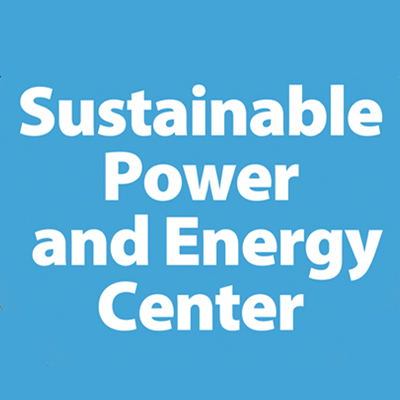UCSD’s Agile Center addresses bottleneck issues facing industry partners in energy technology
As energy technology advances on all fronts, it also faces bottleneck issues that await solutions for further breakthrough. Currently, solar panels are based on silicon technology, rendering the panels rigid and expensive. Energy storage technology for large-scale solar and wind renewable sources is premature, and the techniques for designing batteries to best optimize the value of batteries in the microgrid remain unknown. Such key technical challenges, along with many others, are being evaluated and addressed at the Sustainable Power and Energy Center (SPEC), one of the Agile Centers initiated by the Jacobs School of Engineering at the University of California, San Diego in 2015. Collaborating to solve critical problems that are holding back distributed-energy storage and generation and to accompany power-management systems, scientists at SPEC research and develop higher-performance and lower-cost materials and devices for energy generation, storage and conversion.
At UC San Diego, home to one of the world’s most advanced microgrids, researchers are able to conduct tests on experimental devices in both laboratory and grid-connected conditions, partnering with innovators on electric vehicles, microgrids, photovoltaic panels, wind turbines, wearable power devices, and more. Perhaps the most unique feature of the Center is its interdisciplinary nature, bringing together a broad spectrum of faculty from physical sciences, economics, utility microgrid, engineering, and material sciences to address the complex, ever-changing energy landscape that requires a pool of great talents. Directed by Professor Shirley Meng, the Center’s vision to expand the field not only by making crucial discoveries, but also by training and mentoring students to become tomorrow’s workforce for green and advanced energy. With faculty and students, the Center facilitates fundamental and applied research at the cutting-edge of materials genome computation and design, real-time monitoring of energy devices, scalable nanomaterials manufacturing methods, microgrid design and control, and economic analysis of disruptive new technologies in microgrids.
Current projects include:
- Theory and Computation: Nanoengineers at SPEC help accelerate materials design by developing a new computational, informatics approach to create and analyze rich materials data and applying them to designing new energy materials.
- Synthesis and Fabrication: From informatics and theory, researchers can develop low cost, highly efficient synthetic matters to make nanomaterials at large scale. Techniques involve 3D bioprinting and leveraging cell interactions.
- Characterization and Diagnosis: Researchers are working to monitor energy devices operando, that is, to watch how the materials inside the battery change -- and die -- while the battery is operating. Termed “in situ characterization,” this technology will allow researchers to examine how the materials degrade inside the device while they are in the operating condition, and provide insights to formulate new engineering strategies for improving the materials.
- Manufacturing and Integration: Once theories are tested and materials are developed, researchers at SPEC venture out to collaborate with industrial partners to find manufacturing approaches for lab-scale synthetic matters.
- Microgrid Testing: UC San Diego’s microgrid generates about 90% of the electricity used on the university campus annually and has been monitored with state-of-the-art sensors for the past 40 years. Power generation produced from solar, a fuel cell and a cogeneration plant, the UC San Diego microgrid serves as an ideal test bed for testing devices for real-world applications.
- Economic Evaluation: The technology being developed at SPEC is rooted in thoughtful analyses of the economics of distributed energy. SPEC recognizes that, whether the technology could penetrate to the general public, does not depend solely on great engineering technology; it must carefully consider economic and social issues. Therefore, the Center reaches out beyond engineering and physical sciences to study economical and sociological issues that need to be addressed in ways that inspire truly robust ecosystems for low-carbon society.

Bio
Research at the Center for Sustainable Power and Energy (SPEC) extends from theoretical research through experiments and materials characterization all the way to real-world testing of devices on the campus microgrid. At UC San Diego, researchers have the ability to integrate and test new kinds of batteries and other devices on the grid in real-world settings.
Research at SPEC uses theoretical, computational, and experimental approaches to study, improve, invent, characterize and troubleshoot materials, devices, and systems for energy storage, addressing cost and performance bottlenecks with a focus on materials science and nano- and atomic-scale engineering research.
Nanoengineers, materials scientists, chemists and micro-grid experts, researchers at SPEC are leaders in electrical, structural and chemical engineering as well as the economics of renewable energy. They are professors, students and research scientists, and the partners of SPEC are companies large and small, U.S. national labs, and other top universities.
The Center provides industry partners with a coordinated research environment through which technical and research challenges are tackled in a collaborative environment, and develops the talent and technology necessary for advancing distributed energy generation, storage and power management technologies.

Researchers include:
NANOENGINEERING
Shaochen Chen
3D printing of porous materials with nanoscale designer architecture
Darren Lipomi
Ultra-flexible and stretchable solar cells and inexpensive, large-area graphene
Jian Luo
Novel materials processing methods and interfacial engineering of materials for energy-related applications
Shirley Meng, Director
Electrochemical energy storage and conversion materials, advanced diagnosis for battery materials
Shyue Ping Ong
Data-driven computational design of materials
Andrea Tao
Colloidal synthesis, low dimensional materials for energy storage, plasmonic nanoparticles for photovoltaics and photocatalysis
Joseph Wang
Wearable energy harvesting devices, porous electrodes and electrocatalysis
Kesong Yang
High-throughput computational design and property optimization of functional materials
PHYSICS
Oleg Shpyrko, Associate Director
Advanced X-ray microscopy of ionic, magnetic and electronic materials
CHEMISTRY AND BIOCHEMISTRY
Michael Sailor
Silicon nanotechnology, surface chemistry and coatings, silicon-lithium anodes, photonic crystals
ECONOMICS
Graham Elliott
Market specific algorithms to construct realistic estimates of the direct economic value of the energy storage device
ELECTRICAL AND COMPUTER ENGINEERING
Eric Fullerton
Ultra-low-energy memory, processing elements and architectures
MECHANICAL AND AEROSPACE ENGINEERING
Renkun Chen
Materials and devices for thermal energy transport and conversion
STRUCTURAL ENGINEERING
Yu Qiao
Low-grade heat, energy harvesting, green cement, energy efficiency, thermal runaway in batteries
UC SAN DIEGO MICROGRID
Byron Washom
Strategic Energy Initiatives
For more information, visit http://www.jacobsschool.ucsd.edu/sustainablepower/index.shtml
In the News
UC San Diego News Center (May 2015)
UC San Diego News Center (January 2015)
R&D Magazine (September 2012)
(October 2011)
The Economist (January 2015)
Publications
Videos
Awards
Shirley Meng
UCSD Chancellor’s Interdisciplinary Collaboratories Award, 2013
NSF CAREER Award, 2011
Darren J. Lipomi
AFOSR Young Investigator Program award, 2013
NSF BRIGE award, 2013
Shaochen Chen
Fellow, American Association for the Advancement of Science (AAAS)
Michael J. Sailor
Chancellor's Award for Postdoctoral Scholar Mentoring, UC San Diego, 2013
Shyue Ping Ong
US Department of Energy Early Career Research Program Award, 2013
Kesong Yang
ACS Petroleum Research Fund Award, 2015
Joseph Wang
Highly Cited Researcher (both Engineering and Chemistry), Thompson Reauters, 2014
Listed in the World 2013 Analytical Power List (100 most influential people in the analytical sciences)
Byron Washom
100 Most Innovative Persons in Business, Fast Company magazine, 2010
Patents
Darren J. Lipomi
Zaretski, A. V.; Lipomi, D. J. Method for the Fabrication and Transfer of Graphene. Provisional patent filed 6/27/14.
Joseph Wang
J. Wang, J.R. Windmiller, A.J. Bandodkar, “Wearable electrochemical sensors”, PCT/US2013/040671.


